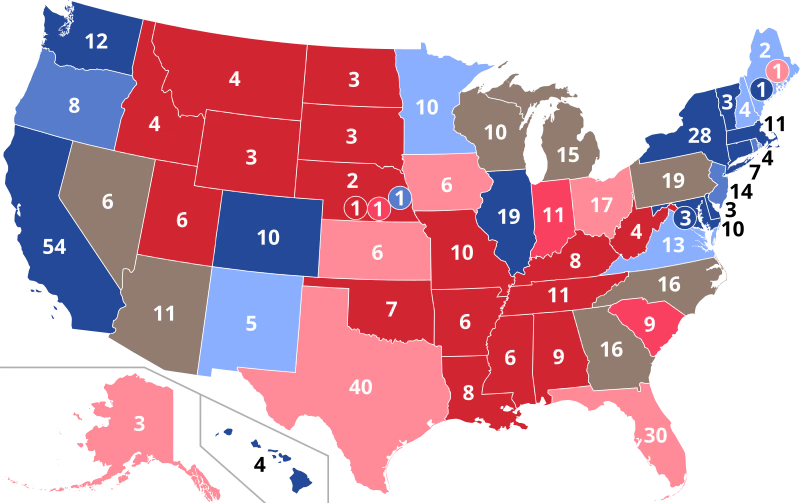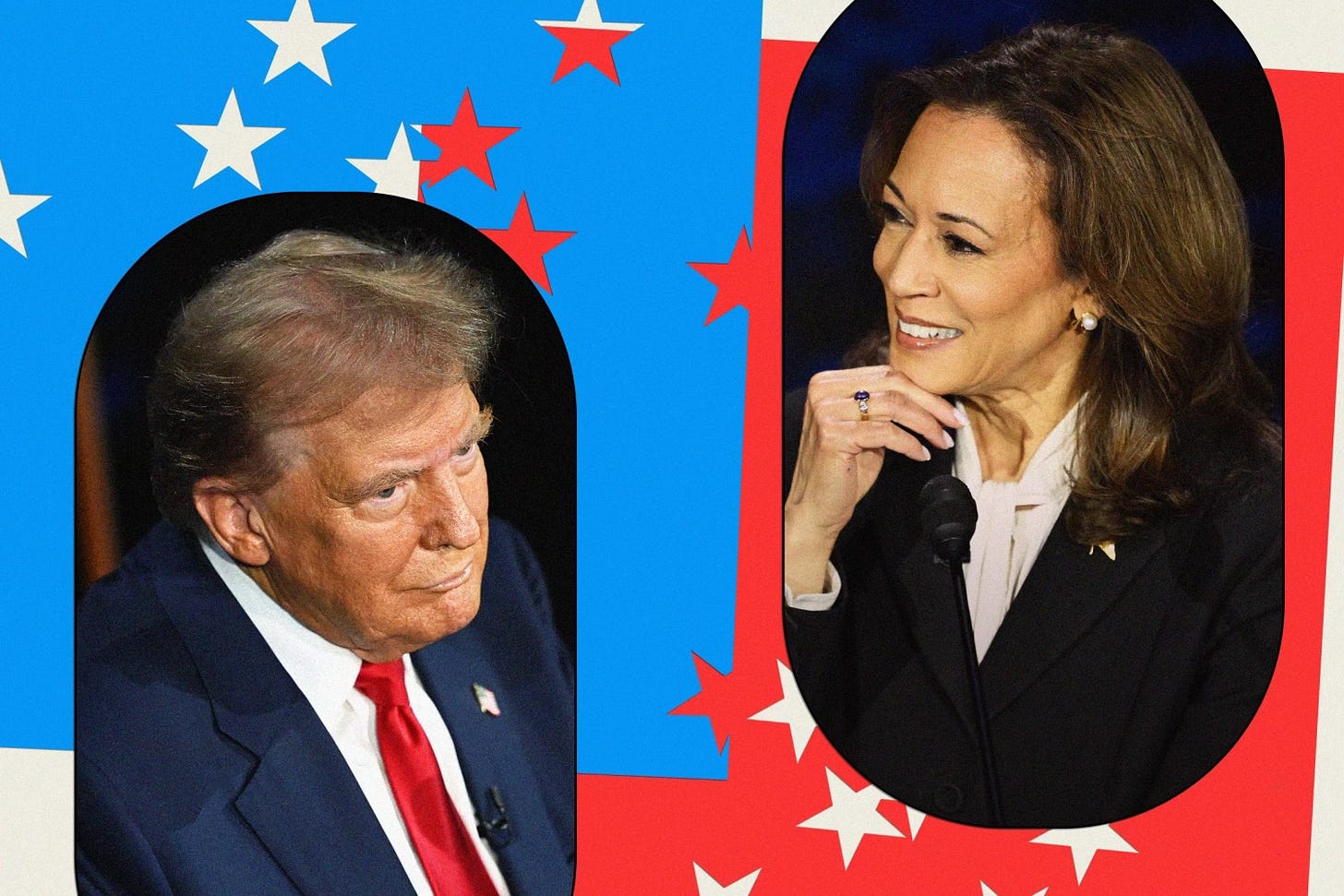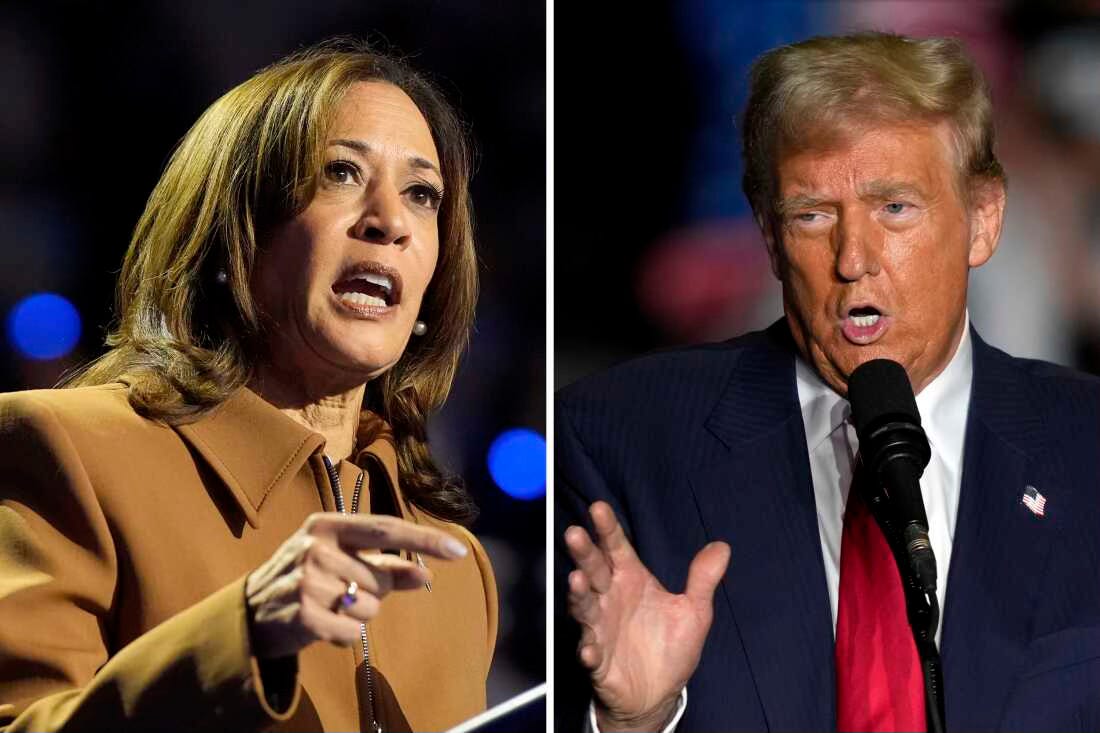Where do the U.S. Presidential candidates stand on higher education? (Part 1)
Americans head to the polls next Tuesday in a high-stakes election for higher education. Here's where the candidates stand, and what that could mean for Canadian higher education.
With a few nail-biting days ahead of the U.S. election, I wanted to dig into where the presidential candidates stand on higher education. Our neighbours south of the border have an enormous influence on Canadian policy, and this election promises to have significant ripple effects for the higher education sector - on both sides of the border.
To borrow (and slightly modify) Metternich’s old adage: when the U.S. sneezes, Canada catches a cold.
This first post will go through key issues, and then be followed up by a separate post (or posts) with some analysis on what certain outcomes could mean for Canadian higher ed.
Accreditation
A) Kamala Harris
Historically, Harris (serving previously as California attorney general) had taken an aggressive tone against “bad actor” accreditors. For example, back in 2016, she called on the US Department of Education to remove its recognition of the Accrediting Council for Independent Colleges and Schools (ACICS), and suing the for-profit Corinthian Colleges for abusive practices towards students. (ACICS has since be de-legitimised, as of 2022).
Currently, the current administration pushed for new policies to require accreditors to take action sooner with non-compliant institutions, and for the Dept of Education to conduct more regularly reviews of “high-risk” accreditors.
B) Donald Trump
Similarly, Trump has historically taken a hard stance towards accreditors, however with more focus on perceived political ties. Last summer, the Trump campaign launched a video promising to “fire the radical left accreditors that have allowed our colleges to become dominated by Marxist maniacs and lunatics”. The campaign called for tighten standards for new accreditors, featuring both politically and culturally-focused objectives, including “defending the American tradition” and “removing all Marxist diversity, equity, and inclusion bureaucrats” — alongside other goals like ensuring low-cost degrees, accelerated programs, and job placement.
However, during his previous tenure, the US Department of Education made significant alterations to regulations covering accreditors that were generally focused on cutting red tape, including loosening compliance benchmarks, removing geographical boundary restrictions, and easing accreditation process for new applicants.
Campus Protests
A) Kamala Harris
In contrast with Trump’s hardline approach, Harris has been relatively quiet about pro-Palestinian student protests over the past 12 months — not endorsing them but also not calling for their removal. In a more recent interview, Harris indicated that she understood the motivations for student protests, but thread a fine line between expressing empathy while also saying there were elements said by some protesters that she disagreed with categorically.
Previously, Harris voiced support in 2020 for the Black Lives Matter protests.
B) Donald Trump
Trump’s approach to campus protests has fit the mould of his catchphrase: fire and fury. Repeatedly, Trump has roundly attacked student protestors and exhorted police officers for forcefully clearing demonstrations (eg Columbia University).
Likewise, Trump has also called on other administrators to follow this hardline approach, saying they need to: “take back our campuses for all of the normal students”. More concerningly, he has also called for the deportation of protestors, a precedent that — while unheard of — has no legal authority.
Affordability
A) Kamala Harris
Historically, Harris has been an ardent supporter for free university (“college”) initiatives, having previously co-sponsored a bill in the Senate to make both community college and four-year public universities free for students from low-income families (earning <$125,000 USD/year) — the latter policy directly aligned with the U.S. Democratic Party’s current platform.
In this vein, the platform also calls for a doubling of both the 1) Pell Grant award maximum (currently set at $7,395) and 2) the funding for the Department of Education’s TRIO programs for disadvantaged students.
B) Donald Trump
Trump’s stance on post-secondary affordability focuses on post-secondary alternatives to the undergraduate degree, and a more narrow focus on ideology. First, his platform calls for more post-secondary alternatives to a 4 year Bachelor’s — rather than directly decreasing the cost of undergraduate degrees. It also proposes an “American Academy” which would be funded through a tax on big, private university endowments, and focused directly on removing “wokeness” from courses.
Other Themes in Higher Education
Given the length of detail needed, I’ll follow up with a separate post on additional issues that I see are important to the future of higher education.
More importantly, we’ll get into where the candidates stand on:
Funding the U.S. Department of Education
International Students
Student Financial Aid
Title IX
So as mentioned, I’ll dig into these elements, and follow up with some analysis on the implications of what this all means for Canadian higher education.
Stay tuned for tomorrow’s follow-up!








